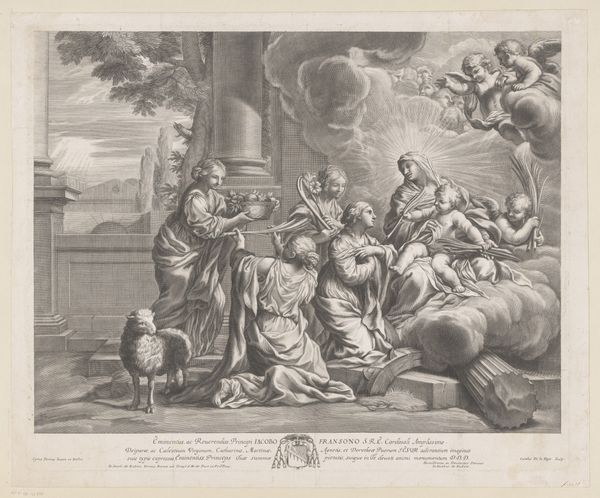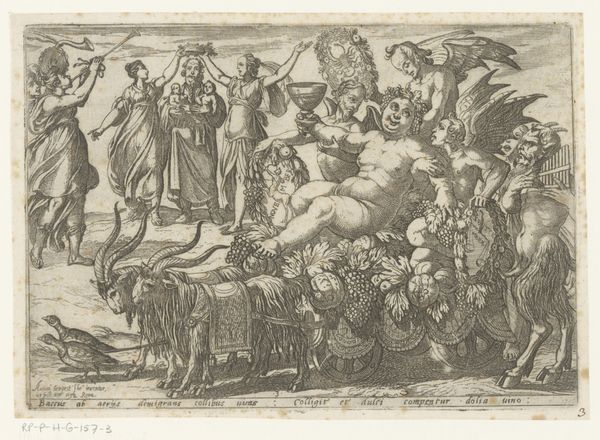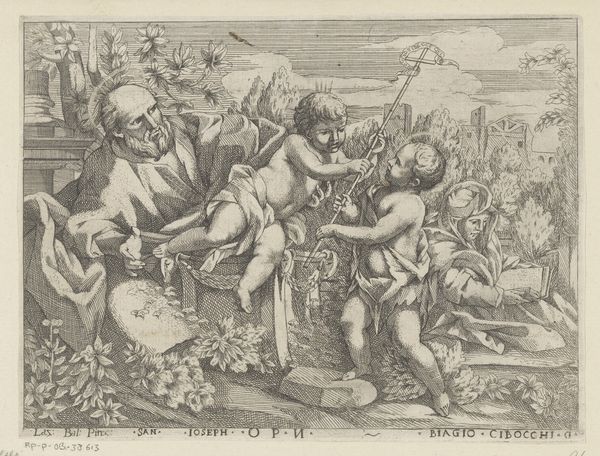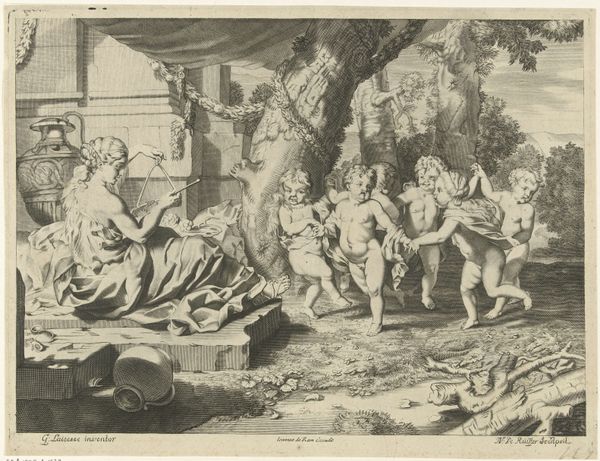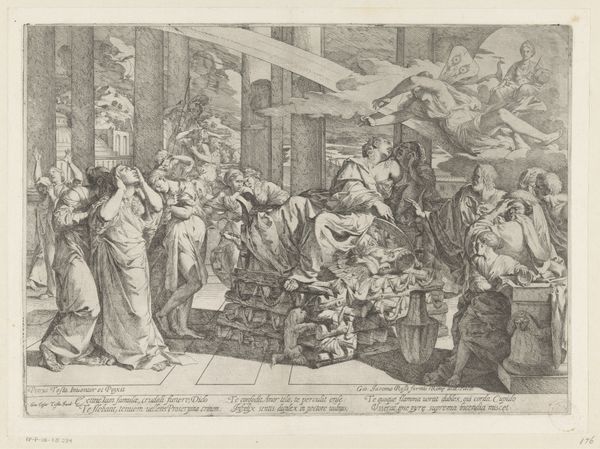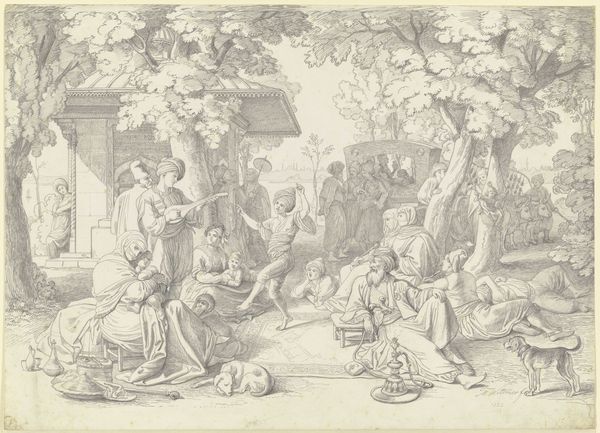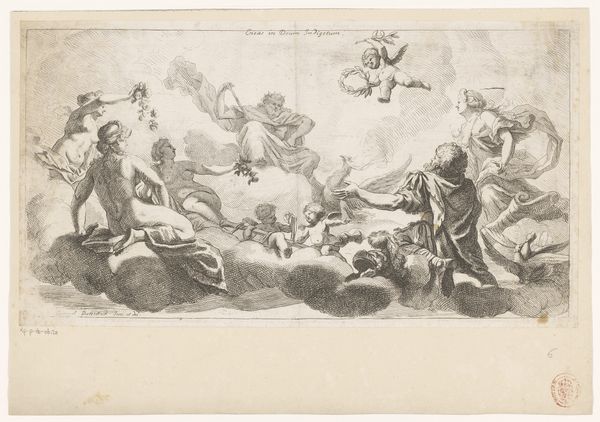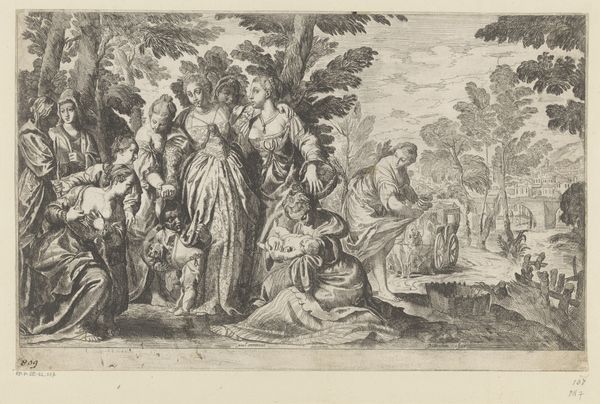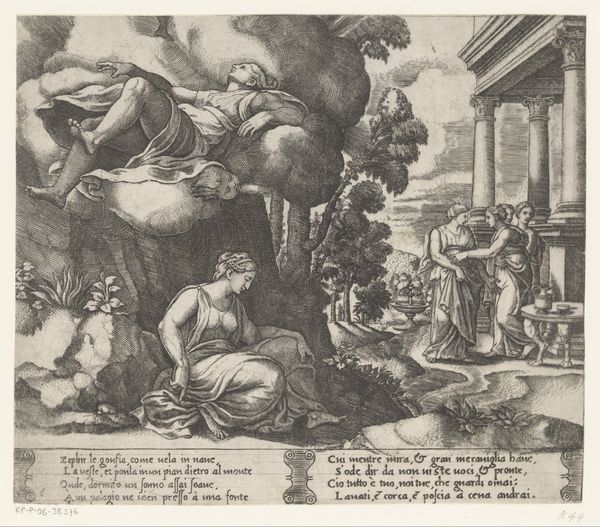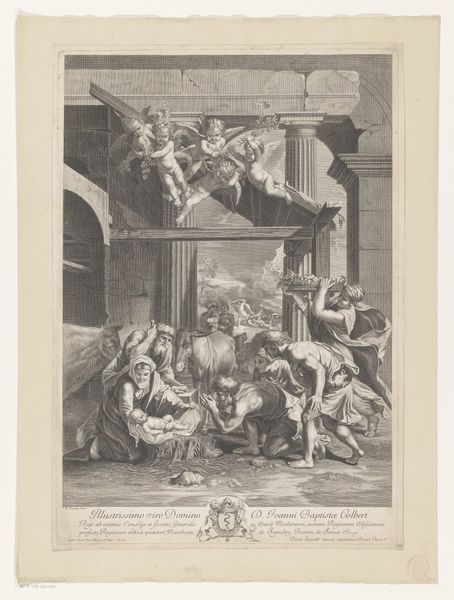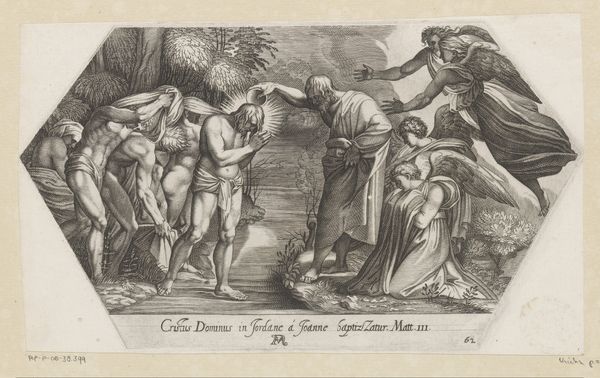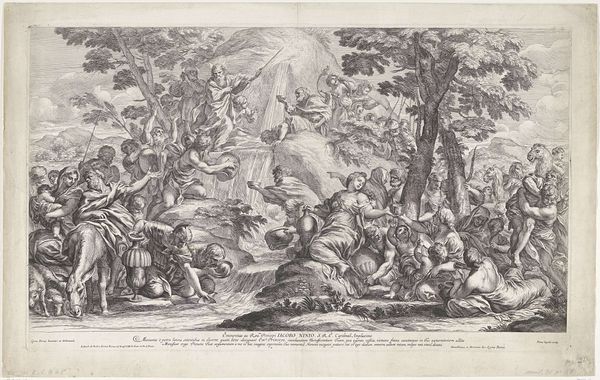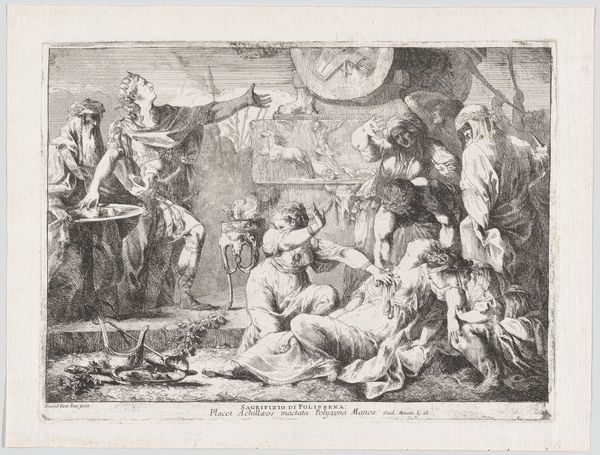
Maria en Kind overhandigen lelies en palmbladeren aan H. Catharina, H. Agnes, H. Ursula, H. Dorothea en H. Cecilia 1661 - 1683
0:00
0:00
guillaumechasteau
Rijksmuseum
engraving
#
allegory
#
baroque
#
old engraving style
#
figuration
#
history-painting
#
engraving
Dimensions: height 390 mm, width 445 mm
Copyright: Rijks Museum: Open Domain
Curator: This is "Maria en Kind overhandigen lelies en palmbladeren aan H. Catharina, H. Agnes, H. Ursula, H. Dorothea en H. Cecilia," an engraving dating from 1661 to 1683. The artist is Guillaume Chasteau, and it currently resides at the Rijksmuseum. Editor: The swirling clouds, the allegorical figures... it definitely evokes the Baroque spirit! I’m immediately struck by how dynamic and theatrical the composition feels, despite being rendered in the stark black and white of the engraving. Curator: Chasteau, though not as famous as some of his contemporaries, was a master of the engraving process. Note the varying line weights; it’s not merely reproductive. Chasteau’s labour itself elevates and interprets the imagery of the original work into something new. The tooling and mark-making becomes part of the artistic interpretation here. Editor: Absolutely, the hand of the artist is clear! Thinking about the narratives, the inclusion of these female saints alongside Mary and the Christ child highlights the importance of female figures and virtue within the context of religious and social structures of the time. It's an interesting mix of power dynamics and expectations placed upon women, wrapped up in this delicate scene. Curator: Exactly, and we can see a visual dialogue taking place between worldly power, represented by Saint Catherine and Saint Ursula with the regal finery, and spiritual authority embodied in the central grouping of Mary and Christ. The materials themselves, the paper, the ink, everything has weight and tells its own story, which we must examine! How might the engraving be situated within histories of printmaking and commerce, of the circulation of ideas, and consumer desires? Editor: Yes, the engraving would allow for wider distribution of this devotional image to diverse audiences. Consider how the reproduction contributes to standardising both religious and societal values related to idealised female roles. This imagery certainly fed into established ideals. Curator: The textures in this print - the fine hatching that creates shadows, and the overall detail are so meticulous. Its production mirrors the laborious expectation that falls on those of both the material conditions of laborers, but the virtuous acts within this imagined heavenly world. Editor: And the fact that we’re discussing this in the 21st century speaks to its enduring resonance within art history. Despite the changing world around us, these dialogues with art are lasting and still have new perspectives and lenses through which they can be examined.
Comments
No comments
Be the first to comment and join the conversation on the ultimate creative platform.
